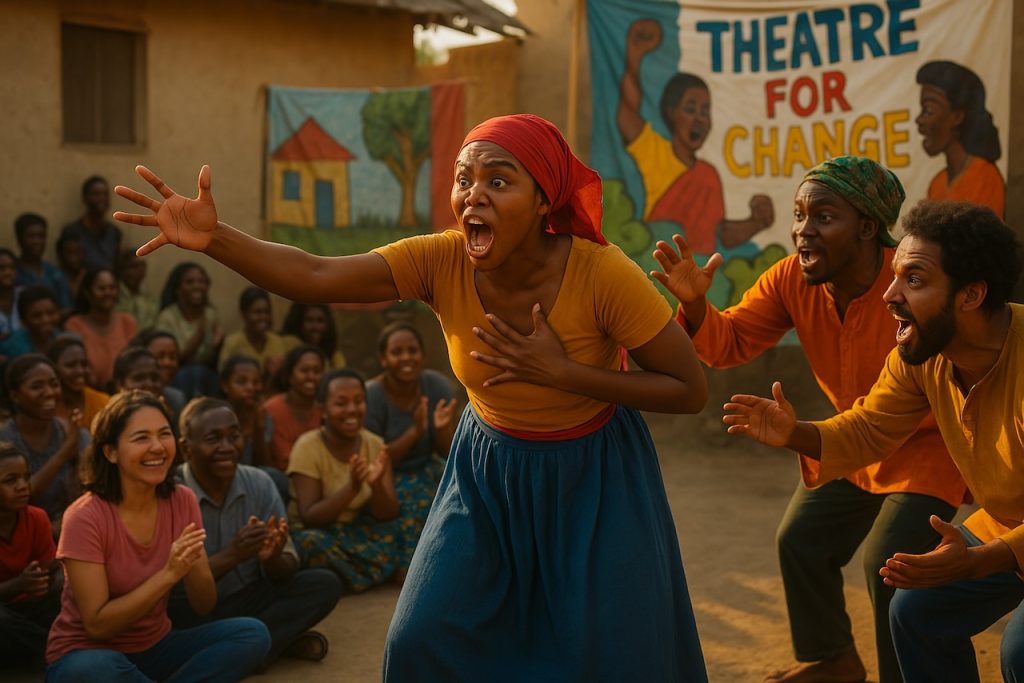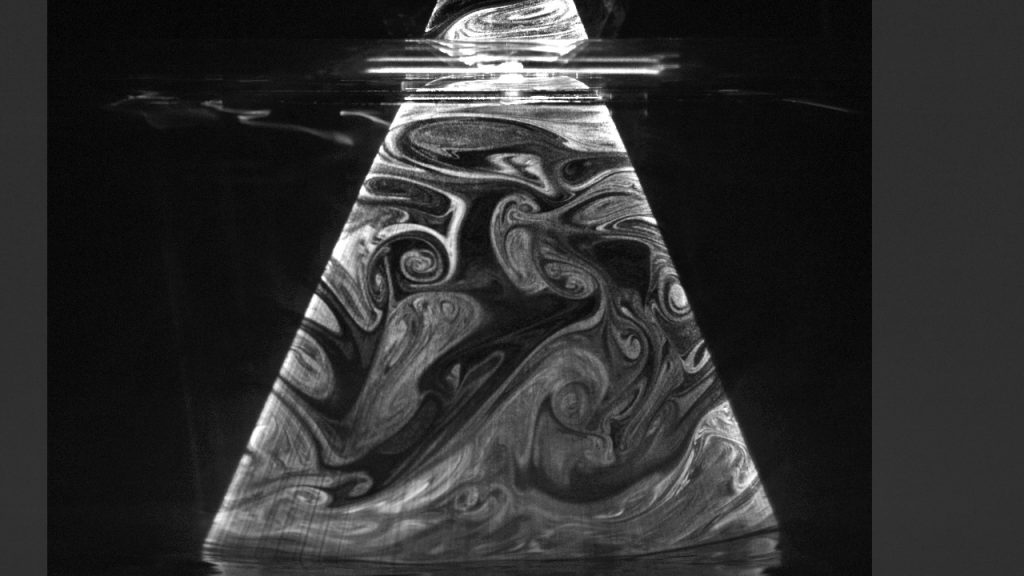Congratulations to all U of A graduate students who submitted their work to our 2025 Images of Research (IOR) Competition and Exhibition! This annual event, which is a collaboration between the U of A Library and the Faculty of Graduate and Postdoctoral Studies, welcomed 69 submissions that allows students to depict their research in a single image. Our panel of judges narrowed the field to 24 semifinalists, our People’s Choice vote was held online, and we celebrated our winners on Thursday, May 29th in our Exhibition Opening.
We thank all of the graduate students who sent in their images, as well as our judging panel. All submissions, including our semi-finalists and winners are available on our IOR Virtual Exhibit. Please join us in congratulating our 2025 Images of Research winners:
First Place + People’s Choice
Theatre for Change
by Valentine Ukoh

This image captures an open-air theatre performance unfolding in a rural community setting. The audience, composed of local residents seated on benches and the bare ground, is visibly engaged—some leaning forward, others responding with laughter and gestures. At the center, actors use minimal props and vivid expressions to dramatize a pressing community issue. This moment symbolizes the transformative power of theatre when rooted in familiar spaces, languages, and cultural practices. My research explores Theatre for Development (TfD) as a dynamic tool for communicating change and development. This image embodies how participatory theatre creates shared spaces for dialogue, awareness, and collective problem-solving—where community voices are not only heard, but activated toward meaningful social transformation.
Second Place
Flowing Insights: Illuminating Turbulence in Sewer Airflows
by Khaled Mohamed

Sewer odours have become a significant urban concern, notably affecting communities in Edmonton such as Steinhauer and Bonnie Doon. Our research addresses these challenges through sewer airflow modeling and experiments. This grayscale image illustrates intricate turbulent airflow patterns, clearly showing vortices and recirculation zones responsible for odour dispersion. This study represents one of the first successful attempts to capture intricate airflow features such as Kelvin-Helmholtz instabilities, and it introduces an innovative technique for accurately measuring low air velocities in sewer systems. This visualization not only deepens the understanding of airflow movement and odour transport in sewer systems but also informs more effective ventilation designs to mitigate odours and enhance urban environmental quality.
Third Place
Emergent Landscapes: Urban Gardens and Bicycle Infrastructure Explored in Painting through the Lens of Human Ecology – Material Culture
by Jill Thomson

This research painting represents spatial interior and exterior relationships of material culture within the dense confines of cities in North America and ancestral Holland. It is a personal remembering and observing of unexpected entanglements among buildings and wild spaces, kitchens and gardens, sitting rooms and forests, where vibrant cities with the familiar vernacular of neighbourhood architecture and public space are travelled on multiple planes. Paths are created by people walking around homes, front yards and gardens and by cycling past local shops and green spaces. The complex interconnectivity among humans, things and the natural world are rendered intuitively through washes, drip marks, and brush strokes. Memories of material relationships—riding and discovering balance on a Dutch-styled bike and helping my children to bike—are a ‘coming home’ to ancestral landscapes that give structure to the painting. Material things created by humans transcend time through memory and overlay places and spaces to create a sense of belonging. The painting’s pathways afford renewed connections to cities, bring spaces alive, and provide people with agency, balance and possibility.
We invite you to read more about how these images were created! Please visit each entrant’s submission page on our IOR Virtual Exhibit.
For more information on Images of Research, including its history, please visit our IOR website.
This content is licensed under a CC BY-NC-SA 4.0 Creative Commons licence.
